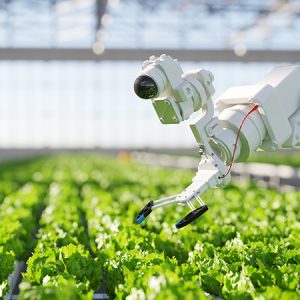The Intelligent Factory: PLC/SCADA, AI, and AR Unite

The world of industrial automation is undergoing a profound transformation. The familiar landscapes of Programmable Logic Controllers (PLCs) and Supervisory Control and Data Acquisition (SCADA) systems are now being augmented by the power of Artificial Intelligence (AI) and Augmented Reality (AR). This isn’t just a trend; it’s a fundamental shift that’s creating the intelligent factory of the future.
Beyond Traditional Automation
Traditional PLC/SCADA systems operate on predefined rules. They’re excellent at executing repetitive tasks and monitoring specific parameters. However, they often struggle with complex, dynamic situations that require adaptability and learning. This is where AI comes in. Machine learning algorithms can analyze the vast amounts of data generated by SCADA systems, identify patterns, and make intelligent decisions in real-time.
AI-Powered Optimization
Imagine a SCADA system that monitors temperature and pressure and uses AI to predict when equipment is likely to fail. By analyzing historical data and real-time sensor readings, the AI can detect subtle anomalies that a human operator might miss. This predictive maintenance can prevent costly downtime and extend the equipment’s lifespan. AI can also optimize processes by adjusting parameters based on real-time conditions, leading to increased efficiency and reduced waste.
AR: Bringing Data to Life
Now, let’s introduce Augmented Reality (AR). AR can overlay digital information onto the real world. In the context of PLC/SCADA, operators and technicians can see real-time data, equipment status, and even step-by-step instructions directly in their field of view.
- Improved Visualization: AR provides an unprecedented level of visualization. Instead of looking at abstract data on a screen, an operator can see the data superimposed on the actual equipment. This makes it much easier to understand what’s going on and identify potential problems.
- Enhanced Collaboration: AR facilitates seamless collaboration. Engineers in different locations can view the same AR overlay and discuss issues in real time, which can significantly speed up troubleshooting and problem-solving.
- Streamlined Commissioning: AR can guide technicians through complex installations. Step-by-step instructions overlaid on the physical environment can reduce errors and minimize downtime.
- Validating with Precision: AR enhances quality control. AR overlays can highlight potential defects, allowing inspectors to identify issues and take precise measurements quickly.
The Synergy of AI and AR
The true power lies in the synergy of AI and AR. AI analyzes the data, and AR presents it in a way that’s easy for humans to understand and act upon. This combination creates a powerful human-machine partnership that can drive significant improvements in efficiency, productivity, and quality.
Challenges and Future Directions
Integrating AI and AR into PLC/SCADA systems is not without its challenges. Data security, system integration, and the need for skilled personnel are all important considerations. However, the potential benefits are enormous. As AI and AR technologies continue to evolve, we can expect even more sophisticated applications in industrial automation. From autonomous systems that can self-optimize to predictive maintenance that can prevent failures before they occur, the future of the intelligent factory is bright.
Key Takeaways:
- AI enhances PLC/SCADA systems by enabling predictive maintenance and process optimization.
- AR brings real-time data and instructions into the physical world, improving visualization and collaboration.
- The combination of AI and AR creates a powerful human-machine partnership.
- While challenges exist, the future of industrial automation lies in the integration of these new-age technologies.


